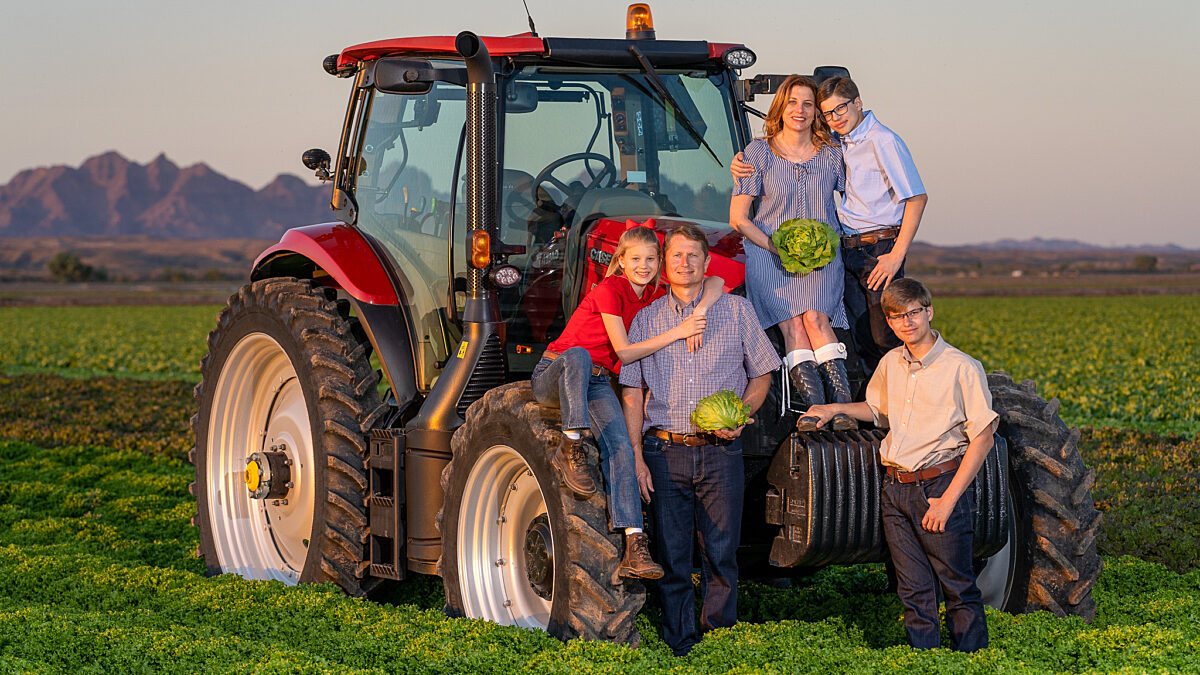Technology Enhances Today’s Agriculture
Cyndie Shearing
Director, Communications

photo credit: John Boelts, Used with Permission
Cyndie Shearing
Director, Communications
This is the second in a series of columns featuring conversations with state Farm Bureau presidents about current issues in agriculture. John Boelts is president of Arizona Farm Bureau. He continues a family farming tradition with his wife, Alicia, in the winter salad bowl capital of the U.S. — Yuma, Arizona. They raise fresh vegetables and melons, durum wheat, cotton, forage crops and seed crops on 3,000 acres with partners.
Q. How much time do most people spend thinking about where their food comes from?
A. John Boelts: Very few of us spend time thinking about where the basic necessities of life — food, shelter and clothing — that sustain us each day come from. The joys and defeats of raising food, and the impacts that insects or weather can have on that food, are not experiences that most people have.
Q. How would you describe modern agriculture?
A. John Boelts: Over the last 10,000 years, humans have been cultivating what we now enjoy as the most remarkable human accomplishment, food security through modern agriculture.
Farmers and ranchers, loggers and fisherman all tend to their crops and work with nature to harvest her bounty. Research, knowledge, hard work and technology are all essential to accomplishing the task of feeding everyone every day and supplying life’s basic necessities.
Q. What are some of the challenges farmers and ranchers face today?
A. John Boelts: Severe weather, insects, plant and animal diseases, drought and wildlife all conspire to destroy or consume the basic necessities of life before they can be harvested by farmers and ranchers and sold to consumers.
We also grapple with clearing up misunderstandings among the non-farming public that stem from not knowing about modern agriculture’s technologies and tools for advancement.
Q. How has technology enhanced farming and ranching?
A. John Boelts: One example is mined and man-made fertilizers that help crops grow more abundantly. Some of those fertilizers are dug out of the ground in mines, like phosphate. Others are synthesized by man-made processes. These man-made fertilizers work just like naturally occurring fertilizers (manure) in supplying plant nutrients.
Over the last 10,000 years, humans have been cultivating what we now enjoy as the most remarkable human accomplishment, food security through modern agriculture.
Another important and carefully vetted technology is pesticides, crop protection tools that have been thoroughly researched and found to be safe when used as labeled. Simply put, pesticides keep diseases and insects from consuming or destroying your food before you get to eat it. New seed technologies provide improvements including crops that can defend themselves from various diseases without the use of pesticides.
Continued improvements to agricultural equipment over the years have reduced the need for many labor-intensive processes that have long been part of food planting and harvesting.
The storage and delivery of irrigation water by efficient means, at the appropriate time, to human food and feed crops for livestock is another great example of technology in agriculture. This provides so many of the healthy foods that we need in our diets every day, such as vegetables and fruit grown in California and Arizona with irrigation water, or tree fruits grown in Michigan, Washington state or Florida, and across America the Beautiful.
Science-based and proven practices of animal husbandry and veterinary medicine are additional tools in the agriculture toolkit. Responsible forest, rangeland and fisheries management and harvesting are critical and if done right could prevent catastrophic fires we’ve become all too familiar with in recent years.
John Boelts is president of Arizona Farm Bureau. Cyndie Shearing is a director of communications at the American Farm Bureau Federation. This column was adapted from an editorial by Boelts published by Arizona Farm Bureau.
Top Issues
VIEW ALL